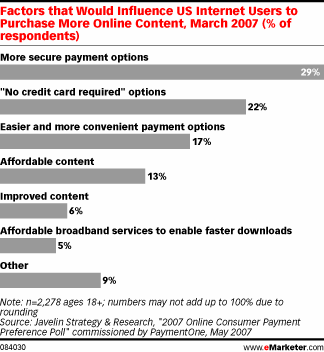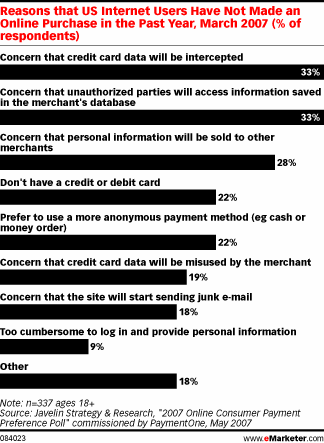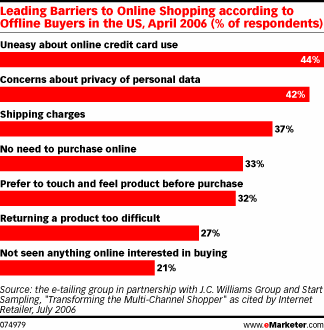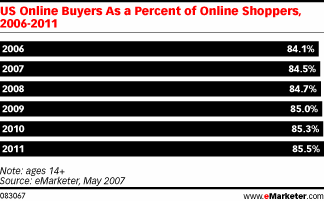That "who had a preference" part was important, because many shoppers already buy with their payment method of choice, be it credit, debit, PayPal or something similar. The Javelin study shined a light on those who did not feel these existing options were safe.
Security and credit alternatives were the main factors that would get consumers to make more purchases.

Two-thirds of respondents limited their online shopping, fearing abuse or theft of their privacy and financial information.
Among those who did not buy online, the top concern was the possibility of information being intercepted during a transaction or accessed by unauthorized parties. Lack of a credit or debit card was also a problem for 22% of non-buyers.

Although retailers have done a good job in addressing online shopper concerns about security and shipping, a third of Internet users were still not online buyers as of 2006.
Credit card fraud and identity theft were the main reasons cited by respondents to "The Multi-Channel Shopping Transformation Study" conducted in April 2006 by the e-tailing group in partnership with J.C. Williams Group and StartSampling.

Most consumers who shop online eventually take the leap to become online buyers. According to eMarketer estimates, 85% of online shoppers will also be online buyers this year.

The question is how to convert those who still have concerns about online shopping in the first place.
eMarketer Senior Analyst Jeffrey Grau says, "Many of the concerns consumers have about online buying are based on irrational fears. Nevertheless, these fears must be addressed. Having a simple return or order cancellation policy, displaying customer product recommendations and reviews, and having an easy-to-use site all help build consumer trust."





